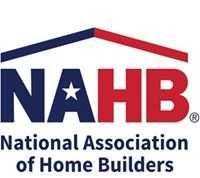ABA Celebrates American Housing Month with Practical Advice for ‘Aging in Place’
WASHINGTON, D.C. – June 10, 2015 – (RealEstateRama) — The vast majority of older Americans want to remain in their homes as they grow older, also known as aging in place. More than 90 percent of the baby boomer population prefer to age in place, according to a recent Georgetown University survey.
“America’s 50 and older population is expected to increase by 20 percent in the next 15 years,” said American Bankers Association President and CEO Frank Keating. “It’s important that older adults and their families plan ahead to ensure they have the housing they need for a safe, comfortable and independent life.”
In recognition of American Housing Month, the ABA Foundation is offering the following tips for older Americans considering aging in place.
Take a hard look at your finances. Arrange a meeting with a trusted family member or friend and a banker. It’s critical to understand your financial resources, how long they’ll last and what housing options are the most cost effective for you. Be sure to consider all costs associated with aging in place, including:
Home modifications
Transportation to medical appointments, shopping and other errands
In home caregiver for house upkeep and medical purposes
Property taxes and home insurance
Consider a reverse mortgage. Though not for everyone, a reverse mortgage loan can provide monthly cash payments based on your home’s equity.
Shop around. Be sure to check with multiple lenders. You can use sites like www.reversemortage.org, sponsored by the National Reverse Mortgage Lenders Association, to find lenders in your area.
Make sure to read all loan documents carefully. There are a number of actions that could cause the loan to become due.
For more information on reverse mortgages, visit aba.com/consumers.
Assess your home and determine what modifications are necessary. While staying in your home is preferable for many, there are often design changes that must be made to ensure it’s also safe and comfortable.
Make sure there is at least one step-free entrance to your home.
Update lighting inside and outside of the house so that all walkways and stairs are well lit. Clear pathways throughout house and firmly secure all carpets to the floor to prevent tripping.
If a bedroom and bathroom does not or cannot exist on the first floor, consider installing an elevator or chairlift. At a minimum, make sure you have handrails on both sides of your stairs.
Install grab bars in the bathtub, shower, or near the toilet.
Make security a priority. Older Americans are often targets for scams and other criminal behavior. Be cautious about who you allow in your home and disclose sensitive information to.
Install up to date and easy to use locks. Make sure your front door has a peep hole or a security monitor so you can see who is outside.
Consult someone you trust when hiring a contractor, financial advisor, etc.
Look into community resources. If mobility is limited, look in to services offered in your area. Many communities have established non-profit programs that offer transportation and food delivery to assist older Americans at a reasonable cost.
Be prepared for possible emergencies.
Keep a list of all emergency contacts on your refrigerator or by a phone.
Consider a Personal Emergency Response System. Transmitters can be worn as a bracelet or around your neck and require the simple push of a button to send a signal to a call center.
Have your address number visible from the street so emergency responders can easily identify your home.
Reevaluate every six months to make sure all needs are being met. As you age, your needs inevitably change. Take time twice a year, or as needed, to sit down with your trusted family or friend and make sure your current living situation is still the right one.
For more information and additional housing tips, visit aba.com/housing.
The American Bankers Association is the voice of the nation’s $15 trillion banking industry, which is composed of small, regional and large banks that together employ more than 2 million people, safeguard $11 trillion in deposits and extend more than $8 trillion in loans.
ABA Media Contact: Sarah Grano
(202) 663-5470
Email:
Follow us on Twitter: @ABABanke














